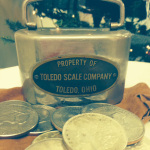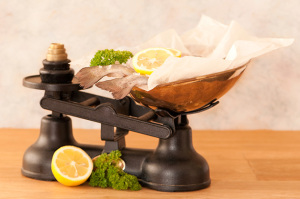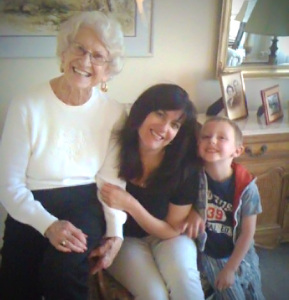Secrets of an Old Coin Bank
Last updated:How a family heirloom helped shape a career…
Nearly fifteen years ago, my grandmother Florence gave me a simple hand-stitched suede pouch with a drawstring. What was inside would connect me to my past, help me professionally and forge the way for a hobby I now hold dear.

Grandma’s old coin bank…
One sunshine-filled morning, my grandmother placed a gift on her kitchen table. Tucked inside was a heavy old coin bank with a metal label stating “Property of Toledo Scale Company.” Also inside was a tiny key. When I coaxed the key to open the door, nearly a dozen large coins spilled out. “I thought you might like to keep these now that you work at the Littleton Coin Company,” she said.
A few months earlier I had taken a job as a copywriter, writing for Littleton’s catalogs and website. And while I owned a few Proof sets and some Silver American Eagles, I didn’t consider myself a “real” collector. My eyes widened as I identified the Morgans, Peace and Ike dollars my grandmother placed before me. I held the coins, found the dates and gazed at the little bank they came from. I knew these coins came with a story and I wanted to know more.

Early scales operated on springs, which made it easy for unscrupulous shop owners to “adjust” the weight and charge unsuspecting customers more than their share. That was until the 1930s, when an employee of the National Cash Register Company (NCR) went out on his own to endorse and manufacture a new type of scale – one that was “trusted” and “used no springs.” He went on to create the now famous Toledo Scale company. The company stood behind their product and even had a crew that would regularly travel to check the scales for accuracy. This ongoing calibration helped brand stores with Toledo scales, like my family’s, as trustworthy.
My gram took a seat and began to tell me the back story behind the little coin bank…
My great, great-grandparents immigrated to the United States from Poland in the early 1900’s. Like so many others, they chased the American dream and finally settled down in a northwest Philadelphia neighborhood known as Wissahickon. There, on Dawson Street, they opened a mom and pop store. The store began as a candy store, but grew to include sundries and a deli. In those days, scales were a crucial part of the business and their consistency of utmost importance.
According to my gram, who worked at the store when my grandfather was serving in WWII, my great-grandmother Bertha purchased a Toledo scale for the store. The scale was bought “on account” and a little bank was designed to hold monies for the scale until the payment was due. Once the scale was paid in full, it was kept on the counter and filled with all types of coins. Years later, the bank and its contents were passed along to my grandparents. They took it with them as they relocated around the nation for my grandfather’s career. The bank reminded them of home.

The author with her grandmother & son
When the bank was passed on to me, it brought with it all its history and my grandparents’ stories of Philadelphia and the corner store. The coins became part of my own coin collection which I now share with my son, and the legacy of our family continues. As an added bonus, I also got the connection I was looking for with my profession. I now know that it is the stories behind the coins and your connection to them that makes you a “real” collector.
What’s your story? Do you have a nostalgic story about how you became a coin collector?




Things our loved ones tell us and leave to us like coin collecting pouch are from God.
Blessings from loved ones. Goodluck in your coin collecting.!
Hi Nanette, thanks so much for your comments. The little bank is a treasure that will be passed on for generations!
Thank you for your story of the little bank. I really enjoyed reading it!
Thank you Winston. We’re glad you liked it! Happy holidays and happy collecting.